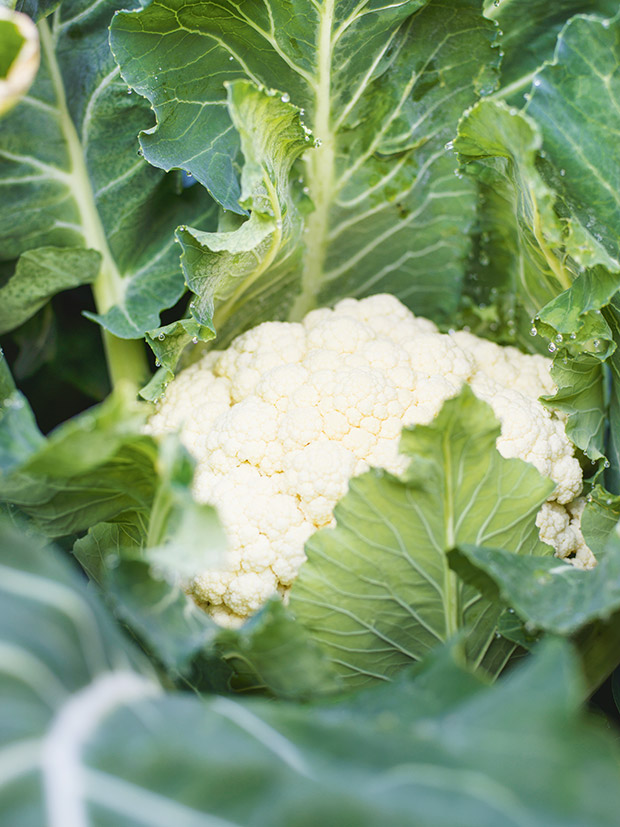How to grow cauliflower in your garden

Be in the know before planting this finicky crop.
Photo: Rachael McKenna
If you live in an area that gets very cold quickly — as we do — make sure you get your cauliflowers in the ground in autumn, earlier rather than later, otherwise, a frost could kill them. Check the leaves every few days for white butterfly eggs. I take great pleasure in squishing them.
QUICK TIPS
Best grown from seed or seedlings
Plant in late summer, early autumn or spring
Space 60-75cm apart
3-4 months from sowing to harvest
Crop rotation: requires large amounts of nitrogen. Ideal for following legumes
Plant family: Brassicaceae
SPECIAL ATTENTION NEEDED
Cauliflowers are finicky. Of all the brassicas, they are the most cold-sensitive. If frosts occur while plants are still in the seedling stage, they may not survive — although established plants will happily grow in cold conditions.
If grown in temperatures above 25°C, the plants may bolt to seed prematurely (go straight to flower without producing a head). Therefore, the best times to plant cauliflowers are late summer, early autumn, or spring.
STARTING OFF
Start seeds in punnets or individual pots and transplant when about 6 weeks old. A tunnel house may be useful for protecting seedlings in cooler areas. Choose a spot that gets all-day sun and dig in plenty of organic material, such as compost or sheep pellets, before planting.
Plant only a few of each variety at a time because your cauliflowers will reach maturity around the same time; different types that mature at varying times will allow for staggered harvesting.
FEEDING AND WATERING
Cauliflowers require uninterrupted growth to form perfect heads. If development is interrupted at any stage (not enough food or water), the heads may be small, or in some cases, they won’t form at all. Water regularly and consistently to encourage rapid growth and feed with a seaweed-based fertiliser.
Besides delivering nitrogen, phosphorus and potassium to your plants, seaweed releases many micronutrients, including boron and molybdenum. Both are ideal for cauliflower growth; a boron deficiency in cauliflowers causes stunted growth and hollow stems, while a molybdenum deficiency can result in whiptail (the growing point becomes deformed and the leaves are narrow and twisted; in extreme cases, only the midribs will develop).
MORE HERE
Recipe: Burnt Cauliflower, Caramelised Onions and Shiitake Mushrooms
 This article first appeared in Nadia: A Seasonal Journal Magazine.
This article first appeared in Nadia: A Seasonal Journal Magazine.

